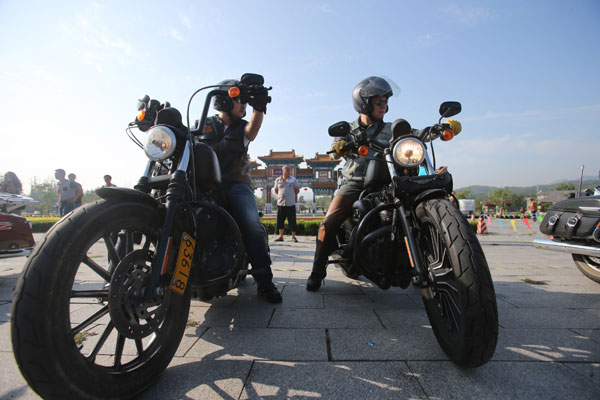High on the hog
 |
|
A biking culture that has long been synonymous with the open roads of North America is gaining popularity in China. [Photo provided to China Daily] |
People on the street often stop Cui to get a close look at his motorcycle. Unlike in the US, "it's rare for them to see Harleys", Cui says.
"They'll ask us to take a photo with them. Every time we ride in the city, we become an attraction."
In conversations with Chinese bikers, the story of how they fell in love with this quintessentially American brand often begins with Arnold Schwarzenegger's 1991 movie, Terminator 2. In the film, which was wildly popular in China, the action star plays a cyborg whose vehicle of choice is a Harley-Davidson Fatboy.
Cui recalls seeing the movie and thinking: "I want one."
"Schwarzenegger looked very cool when he rode a Harley in that movie, which gave me an introduction to the bikes," he recalls.
The Harley-Davidson dealership in Beijing was the first in China, and 14 more have since opened.
A spokeswoman for Harley-Davidson China declined to say how many HOG members there are nationwide, but Shi Zhaoxin, president of the HOG Tianjin Chapter, put the number at more than 8,000 and says it's increasing every year.
Shi, who is in his 40s, rode smaller Japanese models in college and then gave up biking until last year, when he bought his first Harley, a Heritage Softail Classic 110th anniversary edition.
Harley-Davidson "reawoke my passion for biking", he says.
"It's a kind of lifestyle."
Owning a Harley-Davidson motorcycle in China is expensive. The bikes at the Beijing dealership range from 100,000 to 600,000 yuan ($16,290 to $97,740). The bikes cost more in China than in the US - where they are made - because of import duties.
Also, there are many places in China where motorcycles are banned. According to Forbes magazine, more than 200 cities have restrictions on motorcycles, which are aimed at curbing traffic and preventing thefts associated with riders.
















